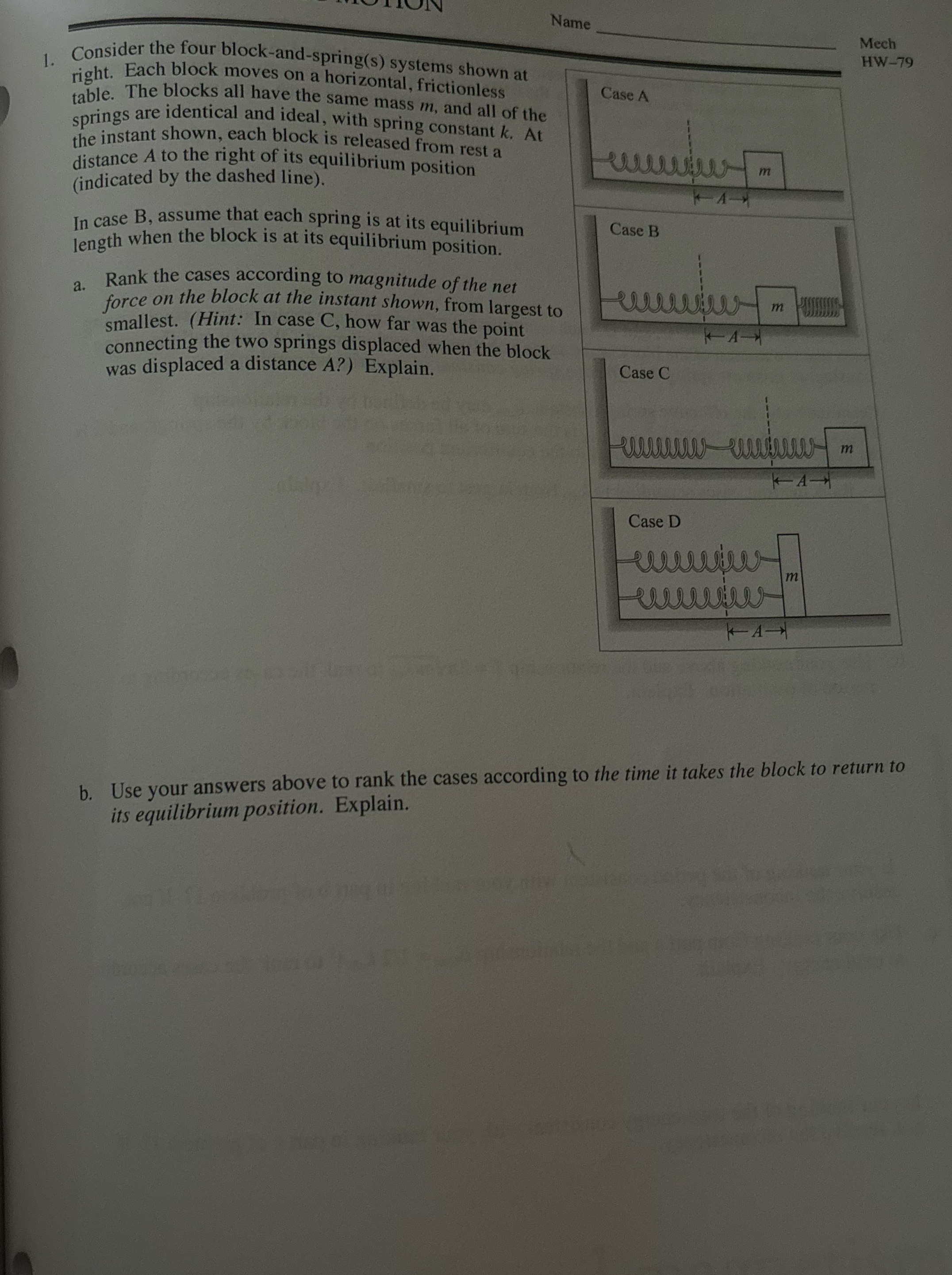Name Mech HW-79 1. Consider the four block-and-spring(s) systems shown at right. Each block moves on a horizontal, frictionless table. The blocks all ha Case

1. Consider the four block-and-spring(s) systems shown at right. Each block moves on a horizontal, frictionless table. The blocks all have the same mass m, and all of the springs are identical and ideal, with spring constant k. At the instant shown, each block is released from rest a distance A to the right of its equilibrium position (indicated by the dashed line). In case B, assume that each spring is at its equilibrium length when the block is at its equilibrium position. a. Name Rank the cases according to magnitude of the net force on the block at the instant shown, from largest to smallest. (Hint: In case C, how far was the point connecting the two springs displaced when the block was displaced a distance A?) Explain. Case A Case B w TA Case C m www TAA wwwwwwww m Case D www wwwwwww TA m A m Mech HW-79 b. Use your answers above to rank the cases according to the time it takes the block to return to its equilibrium position. Explain.
Step by Step Solution
There are 3 Steps involved in it
Step: 1
To solve the problem lets analyze each case stepbystep Part a Ranking the Cases According to Magnitude of the Net Force Case A In Case A there is one ... View full answer

Get step-by-step solutions from verified subject matter experts
100% Satisfaction Guaranteed-or Get a Refund!
Step: 2Unlock detailed examples and clear explanations to master concepts

Step: 3Unlock to practice, ask and learn with real-world examples

See step-by-step solutions with expert insights and AI powered tools for academic success
-
 Access 30 Million+ textbook solutions.
Access 30 Million+ textbook solutions.
-
 Ask unlimited questions from AI Tutors.
Ask unlimited questions from AI Tutors.
-
 Order free textbooks.
Order free textbooks.
-
 100% Satisfaction Guaranteed-or Get a Refund!
100% Satisfaction Guaranteed-or Get a Refund!
Claim Your Hoodie Now!

Study Smart with AI Flashcards
Access a vast library of flashcards, create your own, and experience a game-changing transformation in how you learn and retain knowledge
Explore Flashcards





